We meet up at the 7-Eleven beneath the apartment block in Taichung’s Wufeng District (霧峰), where Nathan Miller lives weekdays (weekends are spent with his wife and daughter in Taoyuan). Breakfast swallowed, Miller suggests we first ride around the corner to Guangfu Junior High School (光復國中).
Passing rows of dilapidated buildings along Sinsheng Road (新生路), a few of which have been renovated to operate as artsy-cutesy businesses, I am reminded that Wufeng suffered badly in the 7.3-magnitude 921 Earthquake, and many more than 100 locals would have died had it occurred during school hours and not at 1:47am.
Apart from a new canopy roof and some supporting beams, the collapsed school, fault rupture and elevated riverbank have been left pretty much as they were. Renamed the 921 Earthquake Museum of Taiwan (九二一地震教育園區) in 2007, the school invites visitors to learn about earth sciences in a natural setting.
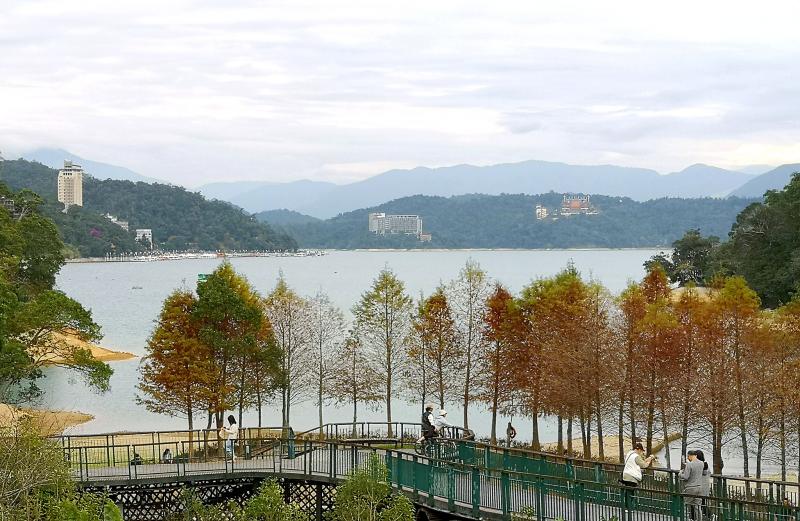
Photo: Mark Caltonhill
“You can easily spend half a day going round the various exhibits,” says Miller, who has brought his daughter here twice, though they have yet to go to the “quake room” to experience what such a macroseism feels like. He’s keen to go back, since he wasn’t in Taiwan in 1999, and his daughter wasn’t born then.
We head off up Provincial Highway 3, which is busy at this hour with both commuters and trucks. Seeing a couple of turn-offs to Jhongsing New Village (中興新村), where Chiang Kai-shek’s (蔣介石) Chinese Nationalist Party (KMT) moved the provincial government in 1956, I suggest a detour. But Miller, who has a school meeting at 3pm, says it’s pretty interesting but deserves a half-day of its own.
SQUEALS OF PLEASURE
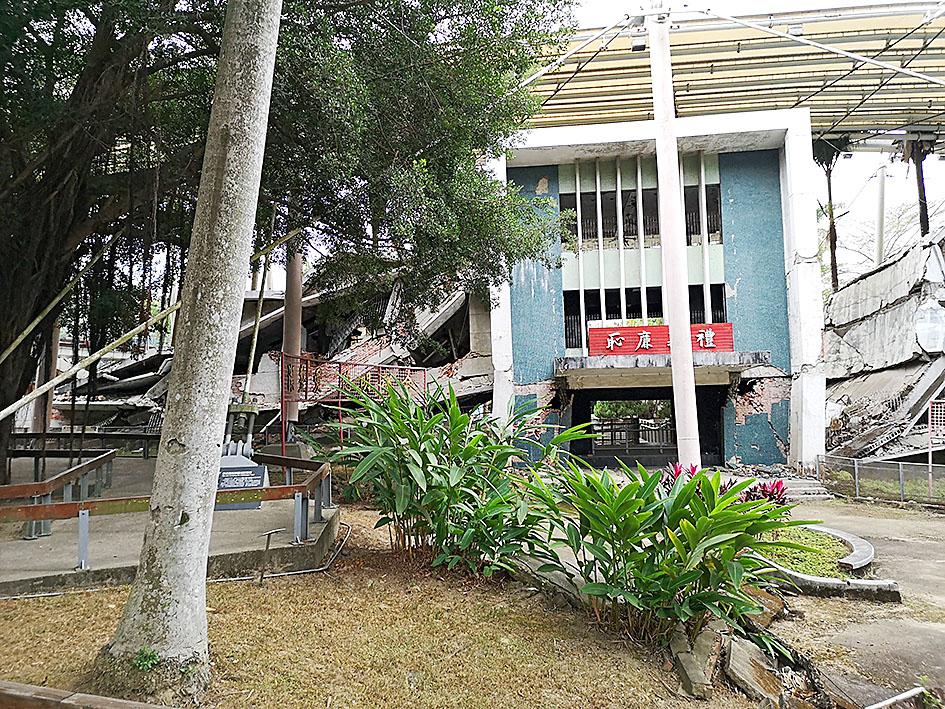
Photo: Mark Caltonhill
“You’ll get a kick out of this,” he says after we’ve pedaled another 20 minutes. “Everyone stops here for a selfie, but I don’t know if your newspaper will print it.”
He’s referring to a 3m-tall sculpture of two pigs making love, the male on top with its tongue hanging out lasciviously. Beneath the pair is the inscription Shengshengbuxi (生生不息), normally meaning “life without end” but, in this context, perhaps “coitus uninterruptus.”
From newspaper reports, this turns out to have been a 2010 publicity stunt by a Nantou meat market wishing to promote a more positive image than mass slaughter. Parents of children at a nearby junior high school complained, however, so it ended up here on top of a hill. (Some other wag complained it was only a bad example for children since it is biologically inaccurate: the female would be standing up if she was in season.)
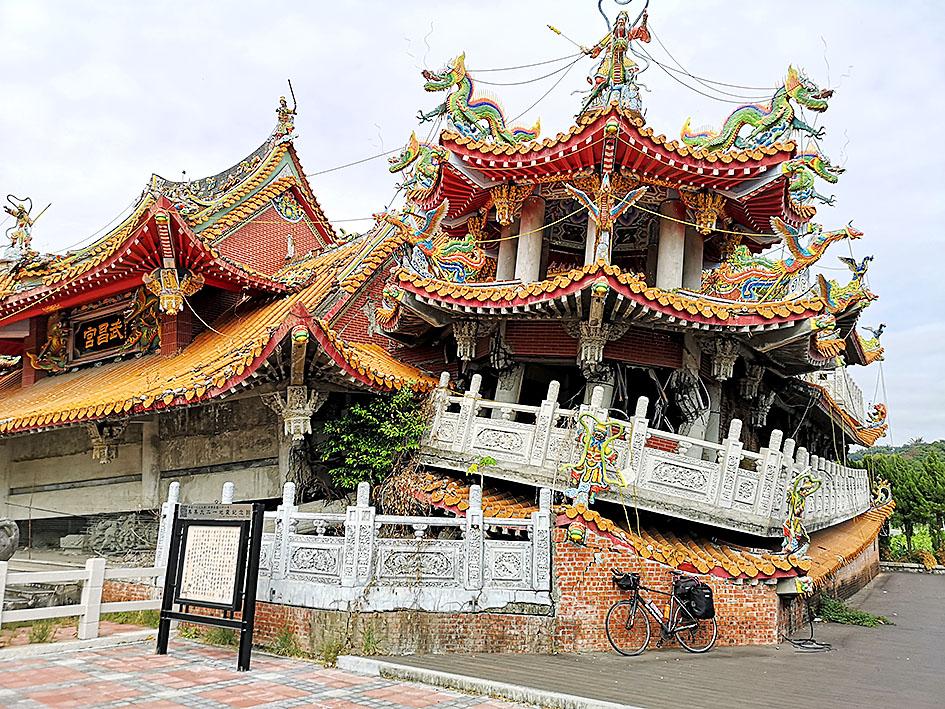
Photo: Mark Caltonhill
We turn onto Provincial Highway 16 and, before long, up a side road to Jiji Township (集集), epicenter of the eponymous 1999 earthquake. It now oscillates between being a sleepy alpine village and vibrant tourist town.
Today, a film crew is in town making an episode of a soap opera, though maybe it is a soap advertisement, albeit with an unusually complex narrative.
Permanent attractions include the 1933 cypress-timber railway station that was rebuilt after the earthquake; Wuchang Temple (武昌廟), which wasn’t; an imitation Ming Dynasty Zhejiang Province-style gallery bridge that dates from 2018; and various Japanese-era wooden buildings belonging to the Camphor Branch Office (樟腦出張所), which survived the earthquake but look like they are being allowed to collapse at their own pace despite a NT$199.5 million (US$7 million) promise from the Ministry of Culture to conserve them as heritage of the area’s former chief industry. The main economic activity today seems to be harvesting and preparaing betel nuts.
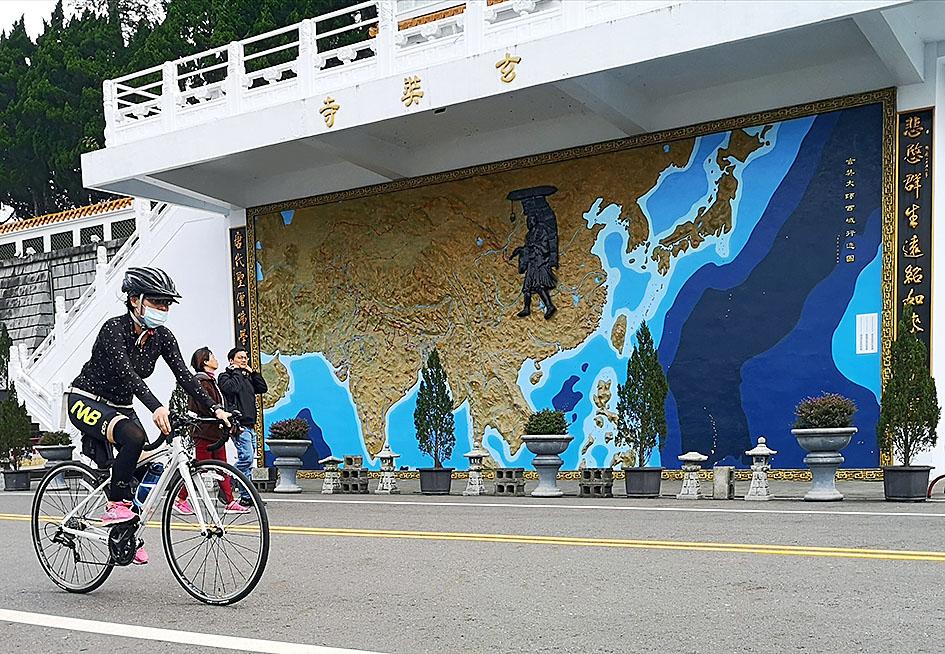
Photo: Mark Caltonhill
PIG-FREE MEALS
Nearby at 252 Minsheng Road, the Naturally Vegetarian (天然素食; Chinese only) restaurant offers a wide range of tasty noodle and rice dishes.
Lunch over, we follow the Jhuoshuei River (濁水溪) upstream to Shueili (水里), where the local Snake Kiln has been developed into a major visitor attraction since my last visit over two decades ago. In addition to the century-old, wood-fired, 30m-long brick kiln, there are now a museum, art galleries, lecture rooms, shops, DIY pottery classes and, standing 6.68m tall, the world’s largest kiln-fired pot.
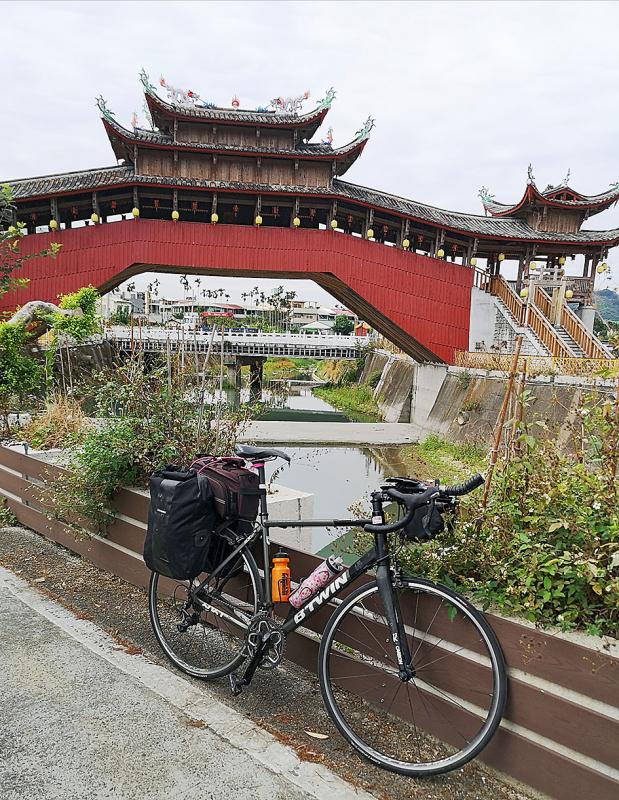
Photo: Mark Caltonhill
And yes, you’ll probably need at least another half-day to do this place — and the NT$150 ticket price — justice.
From here, we have just a dozen of the day’s 65km left up Provincial Highway 21 to Sun Moon Lake (日月潭), but almost half the 900m remaining to climb. The ascent is not onerous, however, and the traffic is much reduced, making for a pleasant ride and a 6 on the Eureka Scale as we crest the final hill and see the tranquil waters of Taiwan’s largest lake and surrounding autumnal trees spread out before us; a paradise at the center of Taiwan (well, about 10km south of the absolute geographic center to be exact).
Presumably the Thao Aborigines gave it 10 out of 10 since they moved to live here after, according to legend (which, in other contexts, might be called oral history), a tribe member inadvertently discovered the fish-filled lake when following a white deer he was hunting.
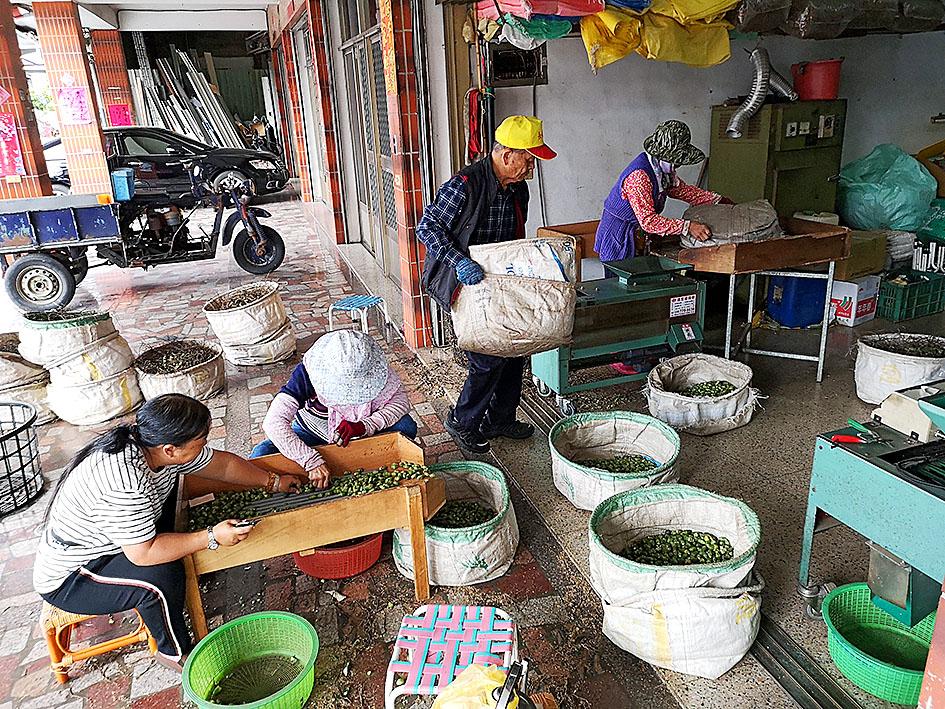
Photo: Mark Caltonhill
From here, Miller has around 55km of fast descent back to Wufeng and that 3pm meeting. I, meanwhile, will ride the undulating 30km through Ita Thao (伊達邵; Barawbaw in the Thao language), largely rebuilt since 80 percent of structures were felled by the quake, and on around the lake, since, not having an appointment myself, I still have a half-day to spare.
Mark Caltonhill bikes, and writes, and writes about bikes.

Photo: Mark Caltonhill
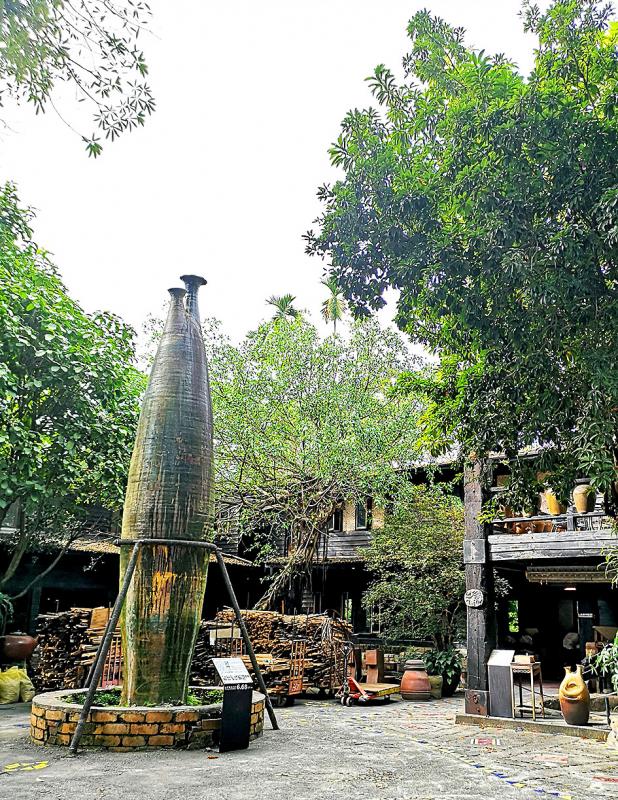
Photo: Mark Caltonhill

Photo: Mark Caltonhill
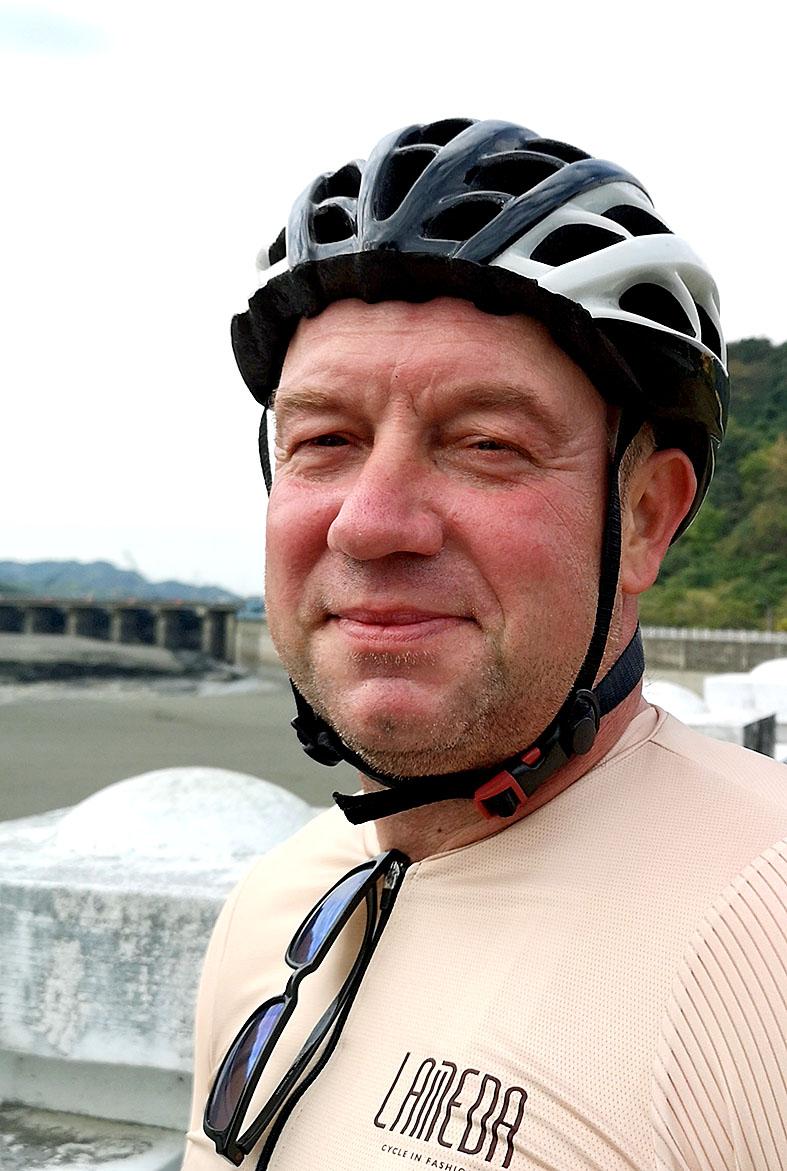
Photo: Mark Caltonhill

Many people noticed the flood of pro-China propaganda across a number of venues in recent weeks that looks like a coordinated assault on US Taiwan policy. It does look like an effort intended to influence the US before the meeting between US President Donald Trump and Chinese dictator Xi Jinping (習近平) over the weekend. Jennifer Kavanagh’s piece in the New York Times in September appears to be the opening strike of the current campaign. She followed up last week in the Lowy Interpreter, blaming the US for causing the PRC to escalate in the Philippines and Taiwan, saying that as

US President Donald Trump may have hoped for an impromptu talk with his old friend Kim Jong-un during a recent trip to Asia, but analysts say the increasingly emboldened North Korean despot had few good reasons to join the photo-op. Trump sent repeated overtures to Kim during his barnstorming tour of Asia, saying he was “100 percent” open to a meeting and even bucking decades of US policy by conceding that North Korea was “sort of a nuclear power.” But Pyongyang kept mum on the invitation, instead firing off missiles and sending its foreign minister to Russia and Belarus, with whom it

The Chinese Communist Party (CCP) has a dystopian, radical and dangerous conception of itself. Few are aware of this very fundamental difference between how they view power and how the rest of the world does. Even those of us who have lived in China sometimes fall back into the trap of viewing it through the lens of the power relationships common throughout the rest of the world, instead of understanding the CCP as it conceives of itself. Broadly speaking, the concepts of the people, race, culture, civilization, nation, government and religion are separate, though often overlapping and intertwined. A government

Nov. 3 to Nov. 9 In 1925, 18-year-old Huang Chin-chuan (黃金川) penned the following words: “When will the day of women’s equal rights arrive, so that my talents won’t drift away in the eastern stream?” These were the closing lines to her poem “Female Student” (女學生), which expressed her unwillingness to be confined to traditional female roles and her desire to study and explore the world. Born to a wealthy family on Nov. 5, 1907, Huang was able to study in Japan — a rare privilege for women in her time — and even made a name for herself in the